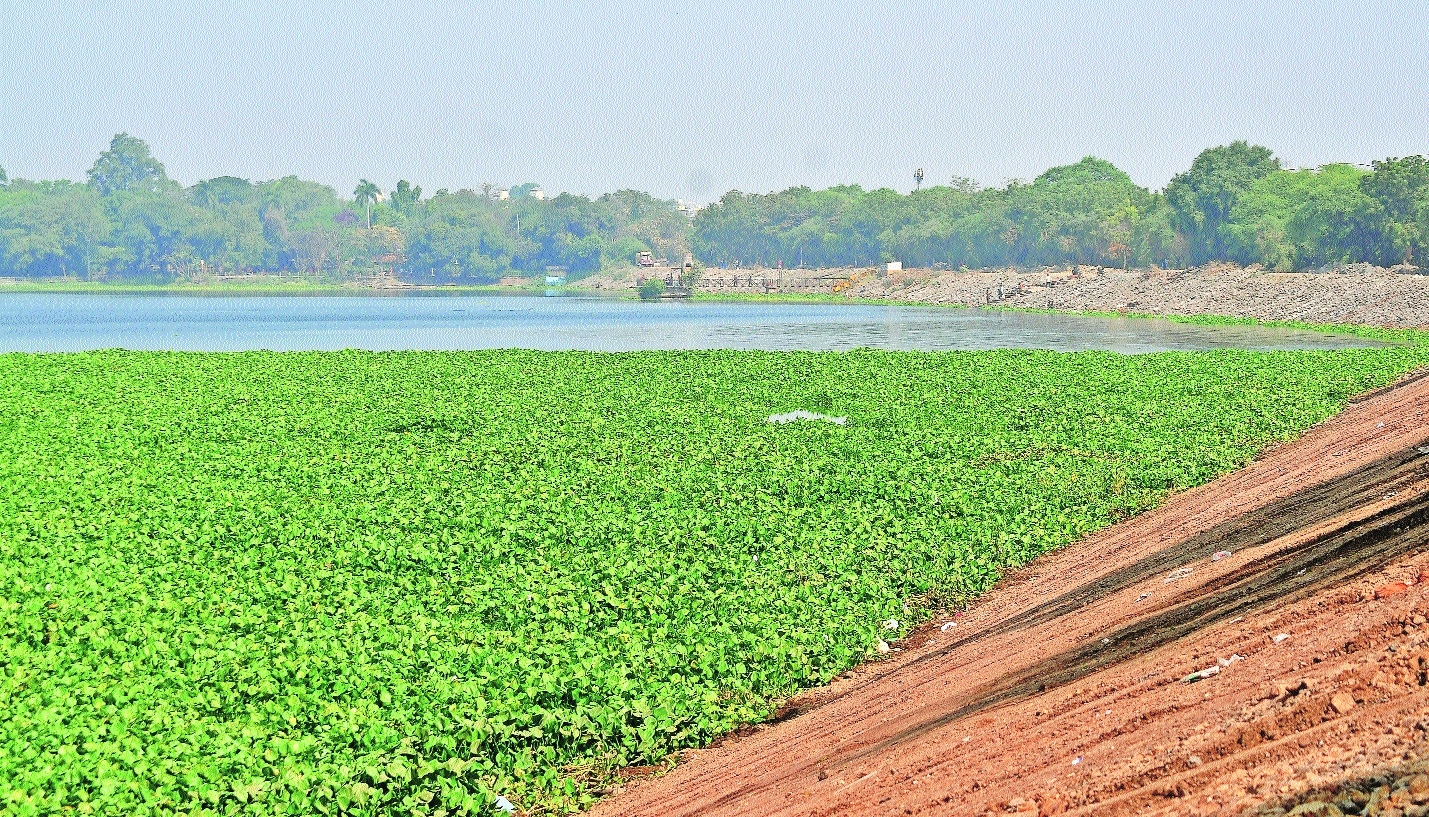Eichhornia in Ambazari lake Wadi STP may take six months to be operational
| Date :01-Dec-2024 |

Staff Reporter :
NMC points at MIDC for releasing industrial effluent in the lake
Wadi Municipal Council (WMC) is constructing 11 MLD sewage treatment plant (STP) to stop the direct release of sewage into the iconic Ambazari lake. The STP, which may be fully ready in six months, may prove to be of help in stopping the spread of Eichhornia in the lake.
Due to presence of sewage in the water body, Eichhornia weed has been spreading rapidly for last one-and-a-half years. This has been destroying the aquatic life in the lake. Presence of nutrients due to intrusion of sewage in Ambazari lake is the main reason behind growth of Eichhornia. To identify the reason behind growth of the weed, Nagpur Municipal Corporation (NMC) conducted inspection of surrounding areas of the lake and found one nullah near Amravati road releasing sewage into the lake. Subsequently, NMC asked WMC to construct the STP.
Accordingly, WMC started construction of the STP after receiving Rs 105 crore from the State Government under the Maharashtra Suvarna Jayanti Nagarotthan Abhiyan.
The STP is being readied near a cremation ground close to Ambedkar Nagar, from where most of the sewage enters the lake. The sludge from the treated sewage would be used to manufacture fertiliser. The operation and maintenance of the STP would be a good source of revenue for the municipal council.
“We had a deadline of one-and-a-half years to construct the STP. The project will be completed within six months,” saud Sushma Bhalekar, Water Supply Engineer, WMC. The WMC has also chalked out a plan to cash in on the treated sewage water by supplying it to Hingna MIDC for a fee. The grant was sanctioned for mainly strengthening the sewage network and installing the STP, Bhalekar told ‘The Hitavada’.
Apart from this STP, Bhalekar said, WMC has also started work on laying sewer network of around 72 km in Wadi area having a population of around 70,000.
The work on more than 25 kms length of sewer line has completed.
Due to absence of sewer line, sewage from Wadi area is being released directly in Ambazari lake for many years. With passage of time, the quantity of sewage increased, and this might have caused frequent spread of the weed in Ambazari lake.
However, Bhalekar disagrees and said, “The quantity of sewage released in Ambazari Lake from Wadi area today is the same as that released four/five years ago. With the help of STP we can treat 11 MLD sewage daily and release the treated water in the lake.”
For last two monsoons, NMC has been undertaking the cleaning of weed from the lake. Still, the weed reappears owing to the presence of sewage. The matter of Eichhornia flooding in Ambazari lake was also raised in the last winter session of State Legislature by the then MLAs, but NMC was clueless on how to handle the situation.
WMC is not the only culprit for this water pollution. The industrial waste may also be entering the lake and Maharashtra Pollution Control Board (MPCB) should conduct thorough enquiry in this regard,said Dr Shweta Banerjee, Superintending Engineer, Environment Department, NMC.
On September 2023, Nagpur witnessed flooding in Nag river due to overflow from Ambazari Lake. Eichhornia weed blocked the culvert under the bridge near overflow point, and this was cited as a major reason behind flood.


